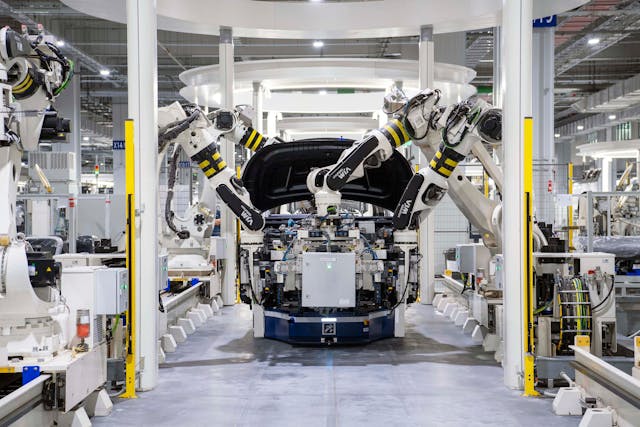Key Takeaways:
- Rising costs, downtime, and outdated systems are clear signs your facility may need automation upgrades.
- Modern automation allows scalable production, real-time data visibility, and reduced labor strain.
- Turnkey solutions make implementation easier than many managers expect, minimizing disruptions.
Making upgrades toward automation in your manufacturing process can help save time and money over the long haul.
Even if you think you don’t need automation solutions, there may be signs it’s time to make the switch.
What Is Automation in Manufacturing?
Automation simply means you utilize robotics, software, and other machinery to handle tasks in production. Many of these tasks are monotonous and draining for human staff, but automation software can assist with complex matters such as troubleshooting problems, accounting, marketing, and reminding you of routine maintenance.
Having automation systems in place increases productivity, allows you to scale output seamlessly, and reduces production downtime. It may also reduce the amount of manpower you need, or allow you to reallocate human resources to other departments where their skills and knowledge can be put to better use.
Sign #1: Your Production Costs Are Rising, but Production Itself Is Stagnant
If you have seen the cost of production slowly rising, but you’re not also seeing increased output, then it may be time to install some automation upgrades.
Requiring additional manpower or machinery to maintain the same level of production is often a sign of outdated equipment that can’t handle scaling your business. Or, you may have reached capacity for what human output can handle in your facility.
Sign #2: You Have Unexpected Downtime
In business, time is money. When your machinery goes down, it can mean a loss of thousands of dollars in a very short time. Having automation systems in place can help recognize problems before they result in catastrophic failure, and software can be utilized to remind you of routine maintenance needed to keep machinery working at optimum levels.
It can also help with troubleshooting problems, so if your equipment does go down, you can get it back up and running in less time.
Sign #3: You Can’t Scale or Adapt to Fluctuation Demands Easily
Suppose your equipment can’t handle an increase in output over time, or you can’t quickly adapt to changing demands. In that case, it may be time to upgrade your manufacturing processes to a more automated setup.
Newer automation models allow you to adjust output easily and even take on new projects without as much hassle, so you can develop new products and customize your output depending on client and business needs.
Sign #4: You Have Trouble Finding Parts or Software Updates
If you struggle to find replacement parts or technicians who are familiar with your equipment, or your system can’t handle the software upgrades needed to maintain peak production, then it’s probably time to upgrade. This is a symptom of old or outdated equipment, which can make it difficult, if not impossible, to stay competitive in today’s market.
Upgrading to a newer automated model gives you access to the latest equipment and software. This allows you ongoing access to support when needed, updated parts for maintenance or repairs, and customer support that can help keep your business online and reduce repair costs and failure risks.
Sign #5: You Can’t See Data in Real Time
If you don’t have real-time data and visibility in your facility, you may be missing crucial mistakes and other important information you need to run your business successfully.
Modern automation tools can collect and compile data you can examine in an easy-to-read format. This gives valuable insights into your production output and financial information so you can make crucial decisions sooner and with better information.

How to Add Automated Systems to Your Manufacturing Operations
Many business owners or managers don’t upgrade their processes because they believe implementing automation is a difficult and expensive task.
In reality, there are turnkey solutions that can help your business implement these systems seamlessly so you won’t lose valuable production time.
Before implementing automation, you should:
Evaluate Your Current Systems
Where do they fall short? What areas would benefit most from automation upgrades?
Set Your Goals
What do you hope newer technologies and automation will help you achieve? Do you want to scale the business, or do you just need to have less downtime to prevent financial losses?
Consider Your Current Systems
Find solutions, either on your own or working with a turnkey provider, that will integrate easily with your current systems. This will prevent hiccups along the way.
Start Small
Implement your new systems on a smaller scale at first to evaluate results and troubleshoot any issues before doing a full rollout.
Conclusion
Upgrading automation is about future-proofing your facility. The right solutions reduce downtime, cut costs, and keep your operations competitive in today’s fast-changing manufacturing landscape.


